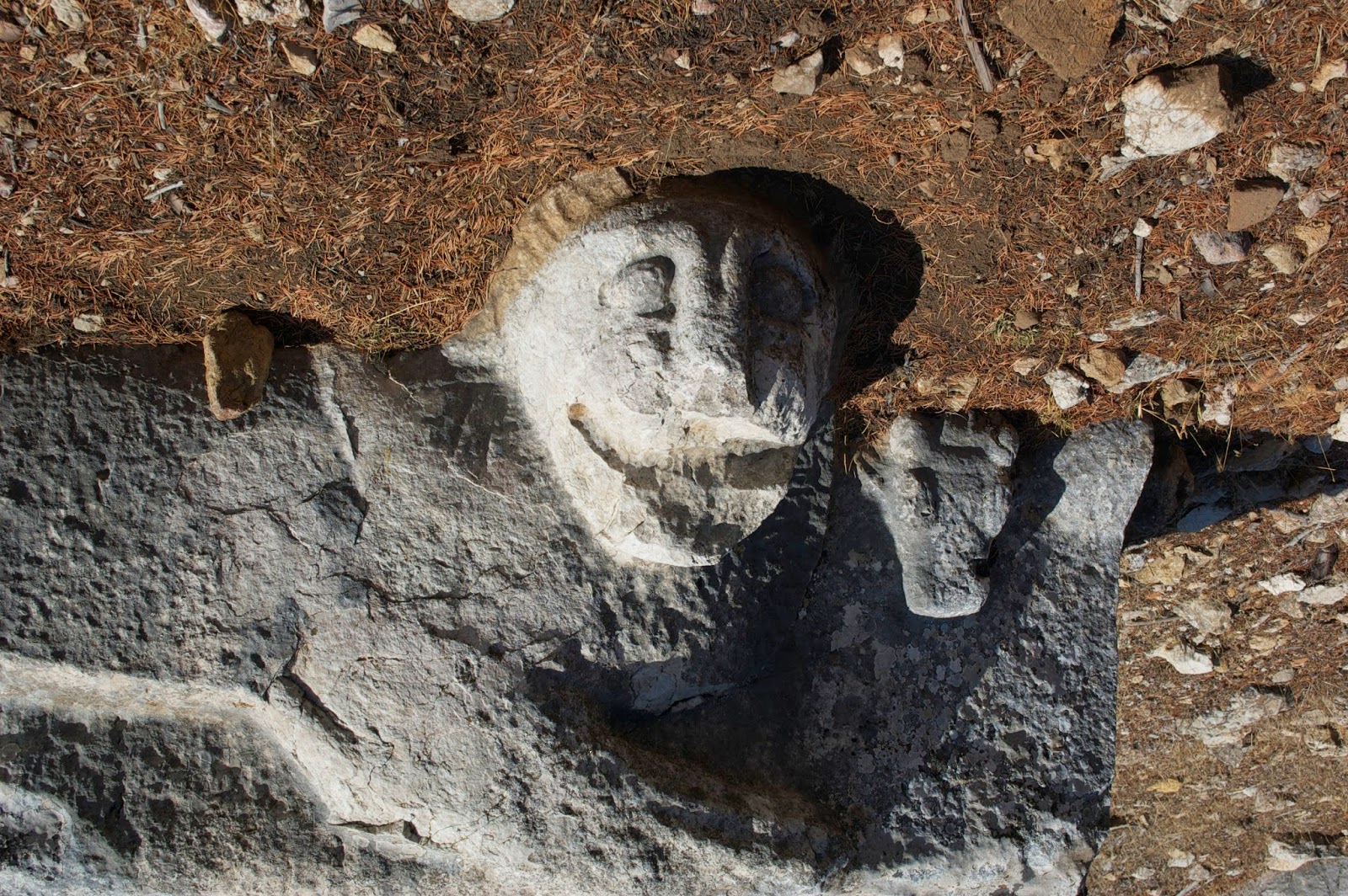Oenoanda is a remote ruin, with very little signage or restoration.
When parking in town, this gentleman approached us with a note card stating in english that he could take us to the ruins, no charge (boy did that change when we offered him money later and he told us it wasn't enough)
But it was still amazing to have a guide, even one who didn't speak english (my turkish sucks too, so...). It kind of felt like we were explorers from the 1800s, tromping through the wilds with our native guide, discovering ancient ruins...
The hike up to Oenoanda was rather step and hot. So we stopped to take pictures of the village and amazing landscape many times
This aquaduct brought water to the town from the nearby mountaintop
We took the path through and over the aqueduct and into the town. One last breather break looking over the valley
breaking the 1850s image. Tour guides now have cell phones
A bench
Aqueduct
A cool lion statue
This was originally a Lycian city, one of the northernmost of such. Later the hellenistic greeks came in, followed by the Romans.
The Hellenistic wall
With a hexagonal tower
This wall is not in any way restored. This is what remains from pre-Roman times. Can you see how small Eric looks in the picture above?
All of this has been sitting on the top of this little mountain since then
Obviously some trimming has been done recently though
Quite a view
Inside the tower with arrow slits and all
Our guide.
I took a quick pic of him in the door way, and he noticed, came into better light and demanded I take a better one.
The tower from the other side. You can glimpse the ramparts or whatnot.
Looking to the other side, away from our starting village
the town was essentially in the saddle between two mountains. the aqueduct on one mountaintop, the theater on the other. you can just make out the theater from the tower.
Zoomed in, can you see it now?
Goats, keeping the ruins clean and visible for us. Thanks
The agora used to be surrounded by building but they all fell to rubble
You can still see the flat pavers though
One of the things that makes Oenoagda stand out is that it is the birthplace of a second century philosopher named Diogenes. He wrote something like 60 meters of philosophical discourse inscribed on columns throughout the town. If I could only read them...
You can kind of get a feel for the agora here
More inscriptions
Obviously this rubble was super fancy when it was a building
These might be baths
Maybe the roman wall
A small palace
More substantial buildings
The theater
Most of this damage looks like a landslide
Amazing views from the theater
Up close
What is left of the stage
Paths between the seats
I just could not get enough of the view
Another building. Our guide didn't speak any english and my Turkish didn't even succeed to communicate thank you, so I have no idea what this was
Part of a cool sculpture. Most places had their art stolen to grace a museum in London or something. This was still here. Kind of a handsome dude?
There is a group of archaeologists there, they have a nice map on their hut. We started on the bottom of this map and the theater is on the top
A tomb
Hiking back down
Just the village itself was adorable and picturesque
A traditional house. the fronts were amazing, but the sun was always in the way
Looking back, Oenoanda was on that saddle. To the left is the mountaintop where the aquifer came from, the theater was on the hill to the right
Village mosque
Our tour guide. He kind of swindled us, but at the same time it was pretty cool to feel like we went back in time for a bit. Victorian scholars and all




























































No comments:
Post a Comment